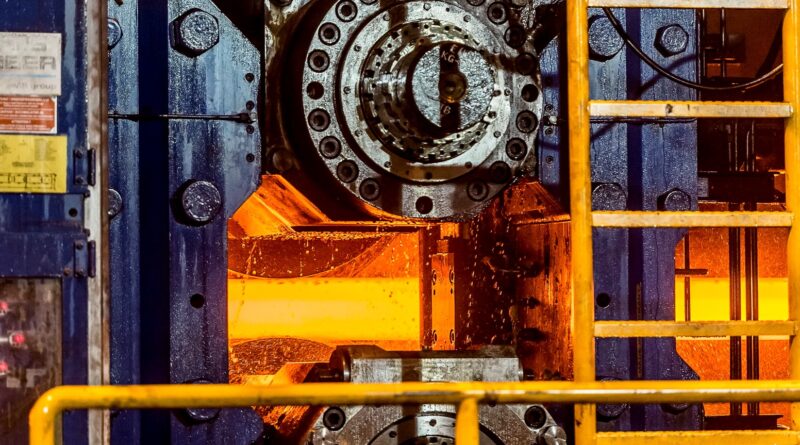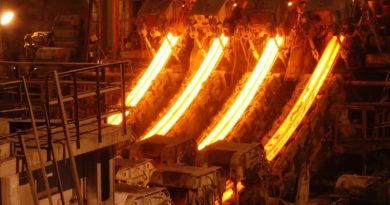Short range outlook for steel industry of developing economies
Emerging and developing economies excluding China – Steel demand dynamics in emerging and developing economies are diverging, with developing Asia excluding China showing more resilience than elsewhere. After falling by 0.3% in 2022, steel demand in emerging and developing economies excluding China will show growth of 3.6% in 2023 and 3.9% in 2024.
India
India remained a bright spot in the global steel industry in 2022. Having managed inflation well, the Indian economy is on a healthy growth track, with a rising share of investment in GDP thanks to strong government spending on infrastructure. The residential sector is also expected to grow, backed by affordable housing projects and urban demand. Private investment is improving on the back of the Production Linked Investment (PLI) Schemes.
India’s capital goods sector is also expected to benefit from the momentum in infrastructure and investment in renewable energy. Automotive and consumer durables are expected to maintain healthy growth driven by sustained growth in private consumption.
After growth of 8.2% in 2022, demand is expected to show healthy growth of 7.3% in 2023 and 6.2% in 2024.
ASEAN
The revival of tourism, especially as China opens up, and the resumption of delayed construction projects have put the region’s steel demand back on its normal growth track. However, since the end of 2022 the region has been facing a deceleration due to the worsening global economic environment. Important projects in the region include Indonesia’s new capital city project, the Philippines’ long-distance railway projects, and Vietnam’s transportation and industrial infrastructure development.
After falling by 0.3% in 2022, ASEAN steel demand is expected to increase by 6.2% in 2023 and then by 5.7% in 2024.
Other Europe
The construction sector in Türkiye has been shrinking since 2018 and contracted by 8.4% in 2022. Considering the base effect and the rebuilding and reinforcing efforts in high earthquake-risk areas, the construction sector is expected to grow by 15.0%.
In 2023, automotive production is expected to expand by 2.5% as the difficulties caused by the chip supply problem ease in the second half of the year.
After falling by 2.6% in 2022, steel demand is expected to increase by 7.4% in 2023 and by 6.0% in 2024.
Middle East and North Africa
The GCC countries were able to weather the headwinds in 2022 thanks to high oil prices, strong domestic demand, a rebound in tourism, and the inflow of foreign wealth. Still, growth is expected to decelerate in 2023 and 2024 due to slower expansion in the oil sector and fiscal conservatism. Post-COVID recovery in the GCC, especially in the UAE, was led by the non-oil sector. Saudi Arabia is planning huge investments into non-religious tourism with the aim of increasing its economic contribution from 3% to 10% of GDP by 2030.
Steel demand in North Africa in 2023 is expected to decline, especially in Egypt and Algeria. The Ukraine war is having an adverse effect on fuel and food import price inflation. In Egypt, the largest steel-using country in the region, demand is expected to contract in 2023 as high inflation and currency depreciation lead to a postponement of large-scale projects. A moderate recovery is projected for 2024.
Following growth of 4.9% in 2022, total steel demand in the MENA region is forecast to grow by only 0.6% in 2023 and accelerate to 3.4% in 2024.
Russia and other CIS + Ukraine
Russia’s economy avoided a large-scale crisis in 2022 and steel demand contracted less than expected. In 2022 it was supported by pipeline projects and residential construction. On the other hand, manufacturing relying on imported parts suffered a material contraction. In 2023-2024, the construction sector is expected to slow down, and Russia’s steel demand is expected to show an accelerating contraction in 2024. In the coming years, the Russian economy will face serious challenges due to Western sanctions as well as workforce leakage due to immigration and military mobilisation.
The continuation of the hot phase of the war beyond expectations is delaying the expected recovery in Ukraine. Ukrainian steel demand currently stands at 40% of its pre-war level and recovery to the pre-war level is likely to take some considerable time.
After falling by 8.7% in 2022, total steel demand in the region is expected to fall by a further 3.5% in 2023 and then by 4.3% in 2024.
Latin America
Latin America is entering a challenging period, with weak growth prospects and political uncertainty. Steel demand contracted in all countries in the region in 2022. All sectors are expected to see moderate growth in 2023 and 2024.
Mexico’s economic prospects are weakened by high inflation and the weak US economy. However, Mexican manufacturing is expected to perform relatively well in the coming years, especially the automotive sector. Light vehicle production closed 2022 with growth of 9.2% and is expected to grow by 6.3% in 2023 and by 6.4% in 2024, driven by exports to the US.
Brazil’s steel demand declined substantially by 11.0% in 2022 due to sluggish manufacturing and destocking. The outlook for 2023-2024 is subdued due to tight monetary policy and fiscal uncertainty. High interest rates, household debts, and a weakening labour market will suppress construction activities as well as durable goods demand in 2023.
The Brazilian automotive sector increased production by 5.4% in 2022, with strong export growth of 27.8%, although the domestic market was weak. The automotive sector lost momentum at the beginning of 2023; weak growth of 2.2% is expected, with a further mild improvement expected in 2024.
The World Steel Association (worldsteel) is one of the largest and most dynamic industry associations in the world, with members in every major steel-producing country. worldsteel represents steel producers, national and regional steel industry associations, and steel research institutes. Members represent around 85% of global steel production.




